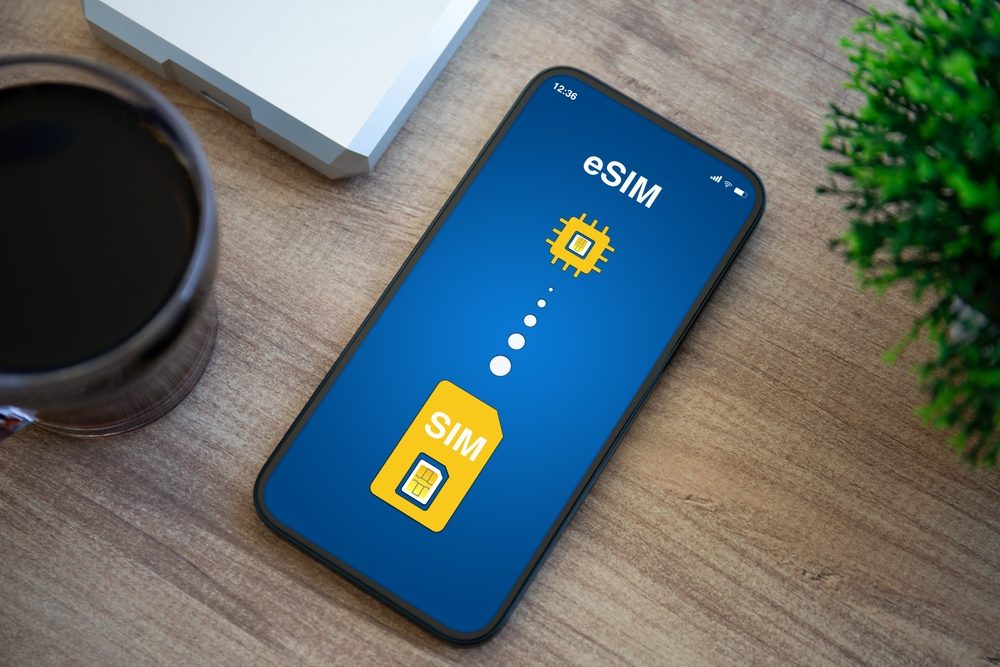As mobile technology continues to evolve, many customers find themselves choosing between a traditional physical SIM and the newer eSIM for kids phones. While both serve the same purpose – connecting your device to a mobile network – the way they work is quite different. At ParentShield, we want to make sure you have all the information needed to pick the best option at checkout.

eSIM Compatible Phones
As of July 2025, the following devices support eSIM functionality in the UK:
| Brand | eSIM Compatible Models |
|---|---|
| Apple iPhone | 16e, 16, 15, 14, 13, 12, 11, SE, SE 2 (2020), XR, XS |
| Apple iPad | iPad Pro 11″ (A2068, from 2020); iPad Pro 12.9″ (A2069, from 2020); iPad Air (A2123, from 2019); iPad (A2198, from 2019); iPad Mini (A2124, from 2019); iPad 10th generation (from 2022); iPad Pro 3rd generation or later; iPad mini 5th generation or later; iPad Air 3rd generation or later; iPad 7th generation; iPad Pro (M4) 13-inch and 11-inch and later (eSIM only); iPad Air (M2) 13-inch and 11-inch models and later (eSIM only) |
| Fairphone | Fairphone 4, Fairphone 5 |
| Google Pixel | 3, 4, 5, 6, 7, 8, 9 |
| Honor | Magic 4 Pro, 5 Pro, 6 Pro, V2, V3, Honor 90, 200 Pro, X8 |
| Huawei | P40, P40 Pro, Mate 40 Pro, Pura 70 Pro |
| Motorola | Razr (2020) (eSIM only); Razr 2019 onwards; Edge 2022 onwards (including Edge 40, 50); Moto G Power 5G (2024); Moto G35, G52, G53, G54, G84, G34 |
| Nokia | XR21, X30, G60 5G |
| OnePlus | Open, 11, 12, 13, 13R |
| Oppo | Find X3 or later; Find N2 or later; Reno 5A or later; A55s 5G |
| Samsung Galaxy | S20, S21, S22, S23, S24, S25; Note 20; Fold; Z Fold2 or later; Z Flip or later; A35, A55 5G, A56 |
| Sony Xperia | 10 III Lite, 10 IV, 10 V, 1 IV, 5 IV, 1 V, Ace III, 5 V, 1 VI |
| Windows Devices | Cellular-enabled laptops or tablets |
| Xiaomi | 12T Pro, 13, 13 Lite, 13 Pro, 13T, 13T Pro; 14, 14 Pro, 14T, 14T Pro; 15, 15 Ultra; Redmi Note 13 Pro+, 14 Pro, 14 Pro+; Poco X7 |
Note: Device availability and compatibility are subject to change. Always verify with the manufacturer or retailer before making a purchase.
Physical SIM vs. eSIM: Key Differences
1. Form Factor and Installation
- Physical SIM: A tangible card inserted into your device’s SIM tray. Handling requires care to avoid damage or loss.
- eSIM: An embedded SIM integrated into your device’s hardware. Activation is done digitally by scanning a QR code emailed to you, eliminating the need for physical handling.
2. Activation and Switching Providers to ParentShield
- Physical SIM: Switching your child’s existing network to ParentShield involves obtaining and inserting a new SIM card, which can be time-consuming.
- eSIM: Changing providers to ParentShield can be as simple as scanning a QR code, streamlining the process.
3. Device Compatibility
- Physical SIM: Universally supported for almost all devices.
- eSIM: Supported primarily by newer models. It’s crucial to verify device compatibility before opting for an eSIM.
Making the Right Choice at Checkout
When deciding between a physical SIM and an eSIM during checkout, consider the following:
Device Compatibility: Ensure your device supports eSIM. If not, opt for a physical SIM.
Personal Preference: Some users prefer the tangibility of a physical SIM, while others appreciate the digital nature of eSIMs.
Important Note: When ordering an eSIM, your portal login details will be sent via post in the SIM pack for security purposes.
